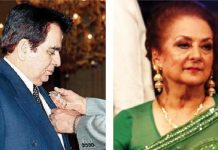
EDITED EXCERPTS FROM AN INTERVIEW
One of the last lines of your book, “Principal purpose and objectives of our foreign policies have been trapped between four lines: the Durand Line, the McMahon Line, the Line of Control and the Line of Actual Control”, is quite telling.
The confinement is twofold, or multifold, really. India lies at the crossroads of four collapsed empires, all of which have left a detritus of the consequences of their collapse, which we are confronted by. The first to collapse, early in the 20th century, was the Qing Dynasty. Then, about 1920, the great Ottoman Empire, which had at one time stretched up to Iberia, collapsed. The consequences of that were diverse — not just the Khilafat movement — but we never studied it. The third was the British Empire, which partitioned us, and the fourth is the collapse of the great Soviet empire. The consequences of these distill themselves into India’s confinement between four lines. The book is an attempt to identify these consequences. We lack a strategic sense, because we lack a sense of territory. We lack a sense of history. We lack a sense of what geography causes to a country’s policies. Geography really is the progenitor of history; it’s the fundamental contributor to policy.
You write that an unthinking allegiance to Gandhi’s non-violence caused the concept of state power to get emasculated…
Yes, because we don’t really follow him. His non-violence was not a debilitating creed. It was, in reality, an empowerment. Do we really feel empowered by non-violence? We all say we are essentially non-violent, but when you look around India today, or in the past 60 years, we are a violent land. This leads to a schizophrenic attitude for the nation.

India At Risk
Jaswant Singh
Rupa
286 pp; Rs 595
I understand, but in what way would you say was state power emasculated?
During the Second World War, for example, Gandhi wrote a letter to the king, published in the Anandabazar Patrika, advising him that if the Germans invaded Britain, they should vacate their land. It went to an extreme, and did influence a lot of the country’s thinking. I carry it further. There is another place in the book where I say that after 1857, there followed a great disarming of India. The carriage of arms, personal weapons, was never a form of offence. Though an object of male adornment, it was a necessary part of our identity. I remember when I was a minister my mother was sick. After visiting her, whenever I left for Delhi, I would go and bid her goodbye, and she would ask me, “Shastra (weapon) to hai, beta?” It wasn’t as if I was threatened, but it was routine in our part of the world for everyone to carry a shastra.
How was disarming our citizens a bad thing?
It took away the self-reliance of our citizens. The Mughals had four-and- a-half million men available for instant recruitment.
The right to bear arms has been debated for decades in the US…
That is a perversion. Don’t use a perversion as an example. All of us have been brainwashed into thinking that should we go down this path, India will erupt into violence. It won’t!
So you are proposing giving arms to the citizenry as a legitimate form of national defence. Already, cases of road rage often escalate into violence.
I do believe that there has been a loss of confidence in our citizens. We must let them protect themselves. What you are talking of is an urban sickness, while 75 percent of the country lives in villages.
ajachi@tehelka.com












